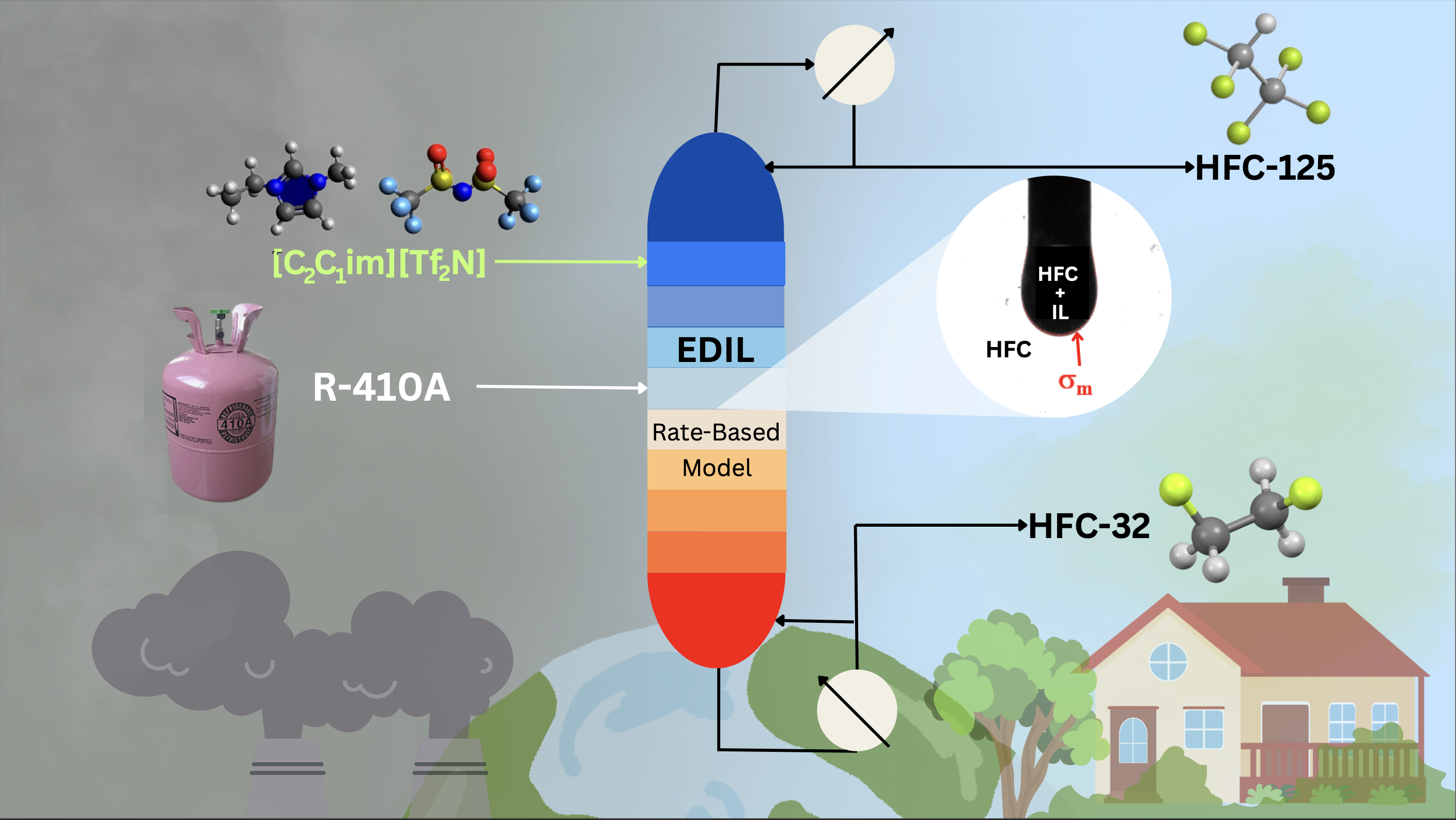2024 AIChE Annual Meeting
Extractive Distillation for Separating Refrigerants Using Ionic Liquids
This research focuses on optimizing EDIL to separate azeotropic mixtures containing HFC-32 (difluoromethane, CH2F2), HFC-125 (pentafluoroethane, CHF2CF3), HFC-143a (1,1,1-trifluoroethane, CH3CF3), HFC-134a (1,1,1,2-tetrafluoroethane), and HFO-1234yf (2,3,3,3-tetrafluoropropene, CH2=CFCF3), with 99.5 wt% purity of each component. The separation of refrigerants such as R-410A (HFC-32/HFC-125 50/50 wt%), R-507 (HFC-143a/HFC-125 50/50 wt%), R-404A (HFC-125/HFC-143a/HFC-134a 44/52/4 wt%), R-407C (HFC-134a/HFC-125/HFC-32 52/25/23 wt%), and R-513A (HFC-134a/HFO-1234yf 56/44 wt%) are being studied using the EDIL. The purity of the distillate and bottom products are analyzed using a Buck Scientific, (model 910) gas chromatograph with a thermal conductivity detector, a HayeSep D packed column, and a Valco 0.5 ml sampling valve.
A process simulation using an ASPEN Plus rate-based model is in good agreement with the experimental results. Binary interaction parameters based on vapor-liquid equilibria for ten ionic liquids (ILs) with HFC-32 and HFC-125 were modeled using the Peng-Robinson equation of state with Boston-Mathias mixing rule (PR-BM). This allowed us to determine the best IL for separating R-410A based on a solubility-selectivity Pareto front. The VLE regression was in good agreement with the experimental data. The best IL for the separation of R-410A was 1-ethyl-3-methylimidazolium bis (trifluoromethylsulfonyl) imide [C2C1im][Tf2N]. . A sensitivity analysis found the optimal operational parameters for achieving the highest distillate and bottom product purities was 20 feed stages, solvent-to-feed ratio of 6, and a reflux-ratio of 3.
Rate-based modeling requires measured transport properties such as density, viscosity, and surface tension for the HFC + IL mixtures. The surface tension for HFC-32 and HFC-125 in mixtures with the IL [C2C1im][Tf2N] under high-pressure and high-temperature conditions were measured using the pendant drop method over a temperature range from 293.15 to 373.15 K and a pressure range from 1 to 9 bar. The experimental data was successfully regressed using Li-Fu-Wang correlation.
